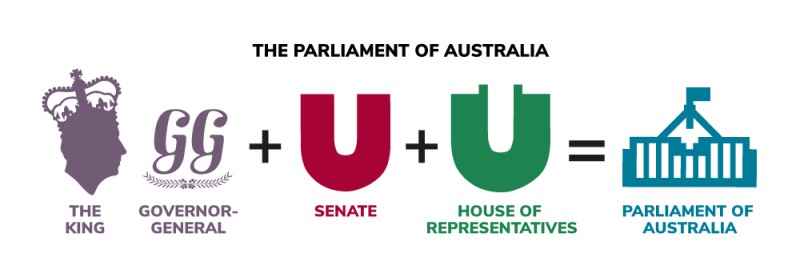Is there somewhere that details, for each act the commonwealth parliament passes, which section/s of the constitution authorises that act?
Thanks for your question, Phillip. In short, the answer is no!
However, there are a number of checks and balances to ensure that bills – proposed laws – are constitutional.
For a bill to become a law, it needs to be passed by both the Senate and the House of Representatives. This means the majority of members of parliament agree to the bill by voting in support of it. Before senators and members vote, they have the opportunity to scrutinise – closely examine – the bill, including raising any concerns about whether the proposed law is unconstitutional.
If both houses agree to a bill, it is presented to the Governor-General for Royal Assent. The Governor-General shares in the responsibility for ensuring that Australia is governed according to the rules set out in the Australian Constitution. They can question whether a proposed law is constitutional and withhold Royal Assent for a bill considered unconstitutional.
Even following Royal Assent, an Act of Parliament may be challenged in the High Court of Australia which can strike down a law if it is found to be unconstitutional.
Parliament of Australia.

Parliamentary Education Office (peo.gov.au)
Description
This diagram illustrates the composition of the Australian Parliament. The Australian Parliament is made up of the King (represented by the Governor-General), the Senate and the House of Representatives.
This work is licensed under a Creative Commons Attribution-NonCommercial-NoDerivs 3.0 Unported License.
You are free to share – to copy, distribute and transmit the work.
Attribution – you must attribute the work in the manner specified by the author or licensor (but not in any way that suggests that they endorse you or your use of the work).
Non-commercial – you may not use this work for commercial purposes.
No derivative works – you may not alter, transform, or build upon this work.
Waiver – any of the above conditions can be waived if you get permission from the copyright holder.
